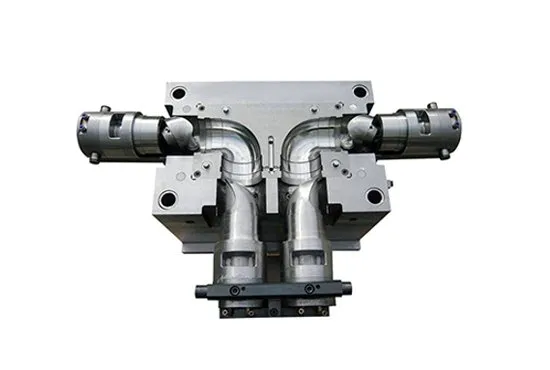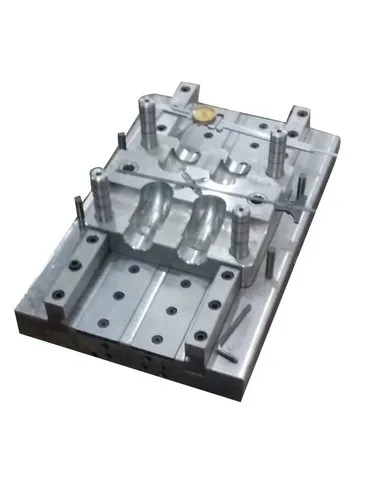PVC (Polyvinyl Chloride) fittings are crucial components in various plumbing, construction, and industrial applications. These fittings, such as elbows, tees, couplings, and reducers, require precise manufacturing processes to ensure their durability, functionality, and ease of installation. The creation of PVC fittings relies heavily on molding techniques, with PVC fitting molds being an essential part of the process. Here’s an overview of the molding process and key considerations for creating high-quality PVC fittings.
1. Understanding PVC Fitting Molds
PVC fitting molds are specialized tools designed to shape liquid PVC resin into the desired form. These molds are typically made from high-quality steel or aluminum and are engineered to withstand high temperatures and pressures during the molding process. The mold’s accuracy and design are crucial to producing fittings that meet industry standards and ensure proper fit and function.
2. The PVC Fitting Molding Process
The manufacturing of PVC fittings follows a process similar to injection molding. Here’s a breakdown of the typical steps:
a. Material Preparation
The first step in the process is preparing the PVC material. The PVC resin is often combined with other additives such as stabilizers, plasticizers, and fillers to achieve the desired properties such as flexibility, strength, and resistance to environmental factors. The material is usually in pellet or powder form, which is then melted for molding.
b. Injection Molding
Once the PVC material is prepared, it is injected into a mold cavity. The injection molding process involves heating the PVC resin to a molten state and injecting it under pressure into the mold. This step is critical for ensuring uniform distribution and eliminating air bubbles that could compromise the final product’s strength and appearance.
c. Cooling and Solidification
After the molten PVC is injected into the mold, the material is allowed to cool and solidify. Cooling channels within the mold help regulate the temperature and speed up this process. The cooling time must be carefully controlled to prevent warping or uneven shrinkage.
d. Ejection and Quality Control
Once the mold has cooled sufficiently, the PVC fitting is ejected from the mold cavity. The mold is opened, and the finished fitting is carefully removed. Quality control checks, such as visual inspections and measurements, are performed at this stage to ensure the fitting meets the required specifications.
e. Post-Processing
In some cases, additional steps like trimming, deburring, or adding external threads may be required after the fitting is ejected from the mold. These processes help refine the product and improve its functionality.
3. Key Considerations in PVC Fitting Mold Design
Creating high-quality PVC fitting molds involves several important design and material considerations:
a. Mold Material
The choice of material for the mold is essential for ensuring the longevity and precision of the mold. High-quality steel or aluminum is typically used because of their strength, durability, and heat-resistance properties. Steel molds are more durable but also more expensive, while aluminum molds are quicker to produce and less costly, but may wear out faster.
b. Mold Cooling System
Effective cooling is essential for uniform solidification and minimizing cycle times. A well-designed cooling system helps prevent defects such as warping, short shots, or uneven wall thickness. The cooling channels within the mold must be optimized to ensure the right balance between cooling efficiency and production speed.
c. Mold Design
The mold design must take into account the geometry of the fitting, including any undercuts, intricate details, and internal passages. Additionally, features like vents and gates are essential for ensuring smooth resin flow and minimizing the risk of air entrapment. The mold should also have proper draft angles, which allow the fitting to be removed easily without damage.
d. Ventilation
Proper venting is a critical aspect of mold design. As PVC is injected into the mold, air must be able to escape to avoid air pockets and bubbles in the final product. The mold must have sufficient vents, particularly in areas where the material flows the slowest.
e. Injection Pressure and Temperature Control
The mold design must account for the optimal injection pressure and temperature to achieve consistent results. The resin must be injected at the correct temperature to ensure proper flow and prevent thermal degradation. Pressure must also be carefully controlled to avoid excess material being injected or poor material distribution.
f. Mold Wear and Maintenance
Over time, molds can experience wear and tear due to the repeated use and high pressures involved in the molding process. Regular maintenance and periodic replacement of mold components are necessary to maintain production quality and prevent defects.
g. Tolerance and Accuracy
The mold must be designed with tight tolerances to ensure that the finished fittings meet the required specifications. Small discrepancies in mold dimensions can lead to significant issues in functionality, including improper fit during installation.
4. Factors Affecting PVC Fitting Molding Quality
A variety of factors can influence the final quality of the PVC fittings, including:
a. Material Consistency
The consistency of the PVC material used in molding can significantly impact the finished product. Variations in resin composition can lead to defects such as warping, brittleness, or uneven wall thickness. Ensuring a consistent material supply is crucial for maintaining product quality.
b. Molding Cycle Time
The cycle time, or the time taken to complete one molding cycle, affects productivity and cost-efficiency. Short cycle times increase production output but can compromise product quality. It’s important to balance the cycle time to ensure optimal fitting quality without compromising manufacturing efficiency.
c. Environmental Conditions
Temperature and humidity can influence the molding process. Consistent environmental conditions in the manufacturing facility, such as controlled temperatures and humidity, can reduce defects and improve molding accuracy.
d. Post-Cooling Handling
The cooling phase of the molding process is particularly sensitive to handling. If fittings are moved or handled too early, the risk of warping or deformation increases. Proper handling and adequate cooling time are essential to preserve the final product’s integrity.
5. Conclusion
PVC fitting molds are integral to the manufacturing of high-quality PVC fittings used in a variety of applications. The molding process involves several critical stages, including material preparation, injection molding, cooling, and post-processing. When designing PVC fitting molds, key considerations such as mold material, cooling system, design, and tolerance must be factored in to ensure the final product meets the required standards. Understanding these processes and considerations allows manufacturers to produce durable and reliable PVC fittings that meet industry demands while maintaining cost-effectiveness and efficiency.


